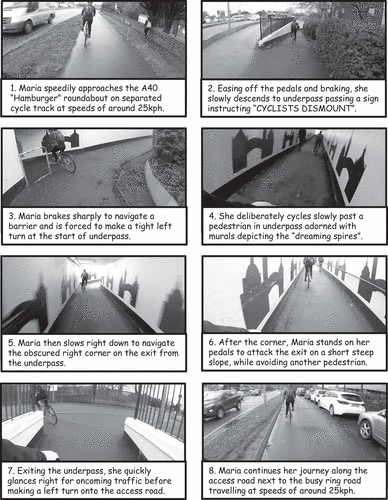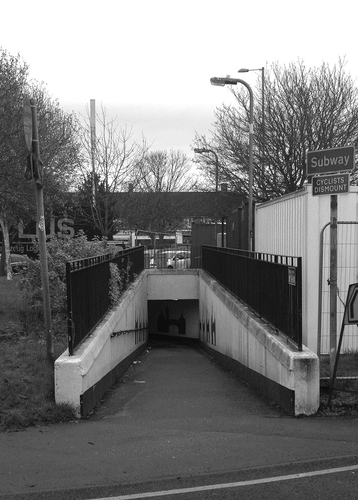Figures & data
Figure 1. Jensen’s staging mobilities model (from: staging mobilities, Ole B. Jensen, copyright (© 2013). Reproduced by permission of Taylor & Francis Group.
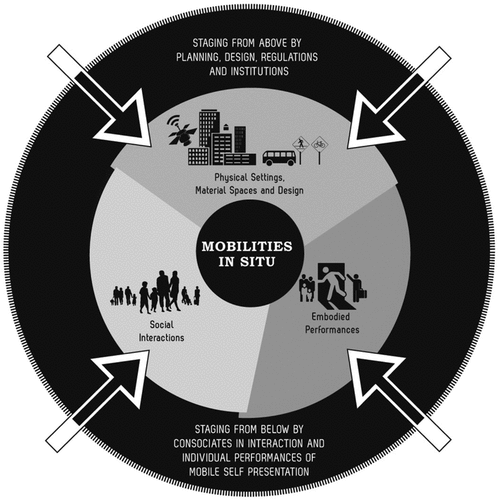
Table 1. Participant profiles and journey summary.
Figure 2. Configuration of the A40 “hamburger” roundabout. (map data: Google earth, image © 2023 Maxar Technologies, image © 2023 Airbus).
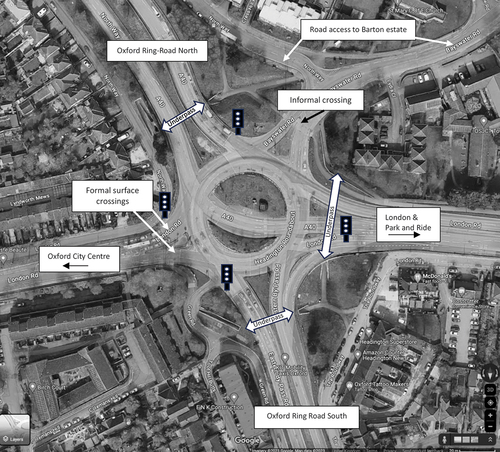
Figure 3. Crossing at the Barton arm of the A40 “hamburger” roundabout (source: authors’ own).
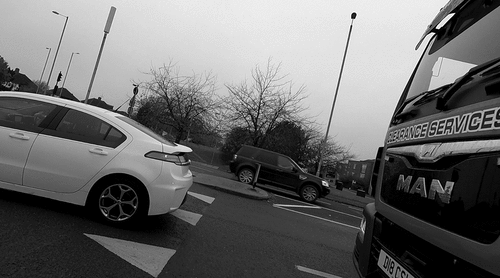
Figure 5. Access to the underpass under the A40 “hamburger” roundabout with murals symbolising the “dreaming spires” of Oxford University colleges (source: authors’ own).
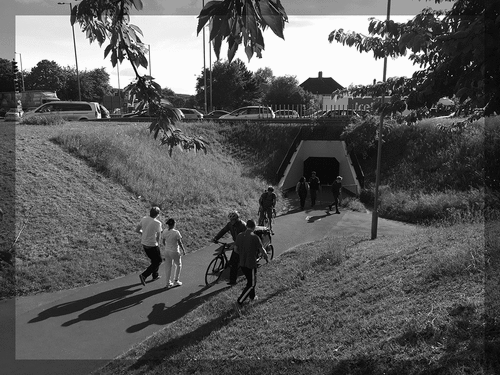
Figure 6. Maria negotiates the underpass under the A40 “hamburger” roundabout (source: authors’ screen grabs from chest-worn action camera, shot at 1920 x 1080, 50 fps).
